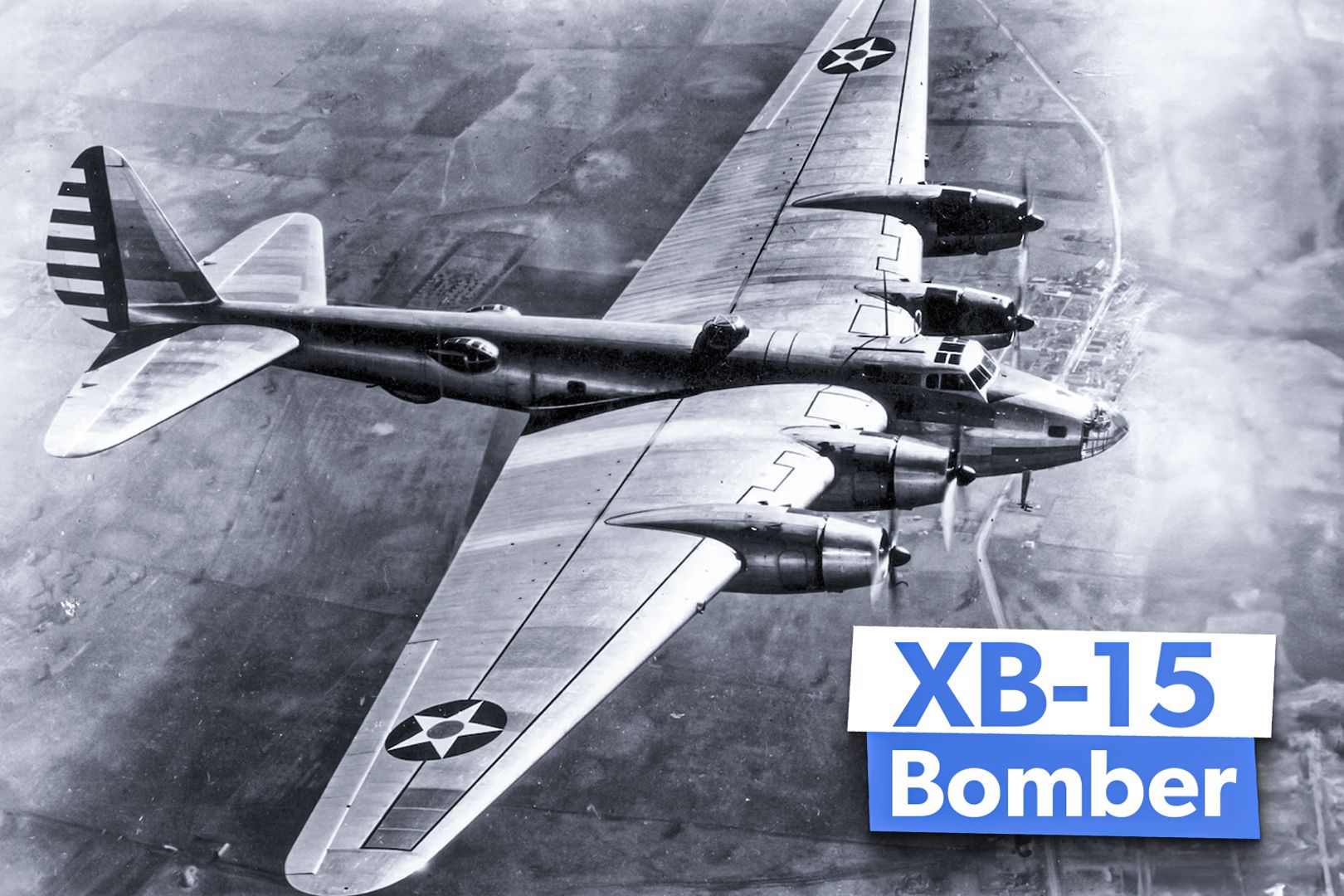Summary The XB-15 performed US Army Air Corp flights in the late 1930s and 1940s, setting world records in payload heights and distances. The XB-15 was initially underpowered with delayed engine readiness, hindering its full performance potential. In May 1943, the XB-15 was converted into an XC-105 military transport for cargo operations during World War II.
The Boeing XB-15 was a bomber prototype that performed United States Army Air Corps (USAAC) flights in the late 1930s and early 1940s. Designed and developed by Boeing as a test for the US military to test the feasibility of a heavy long-range bomber. The aircraft performed its first flight in October 1937, and following its mission readiness, it was assigned to the 2nd Bombardment Group at Langley Field in Virginia.

In January 1939, the XB-15 flew a relief mission following the earthquake in Chile. The aircraft flew essential medical supplies to Santiago. The Boeing XB-15 Crew : 10 Length : 87 ft 7 in (26.
70 m) Wingspan : 149 ft 0 in (45.43 m) Height : 25 ft 10 in (7.87 m) Wing area : 2,780 sq ft (258.
4 m2) Airfoil : root: NACA 0018; tip: NACA 0010 Empty weight : 37,709 lb (17,141 kg) Max takeoff weight : 70,706 lb (32,139 kg) Powerplant : 4 × 14-cylinder Pratt & Whitney R-1830-11 radial engines Power per engine : 1,000 hp (634 kW) Boeing designers began the XB-15 project in mid-1933, aiming to build a very large bomber that could fly a range of 5,000 NM (8,000 km). Moreover, the USAAC required the aircraft to carry at least 2,000 lb (910 kg) and fly at an approximate speed of 180 knots (210 mph, 320 km/h). Internally designated as Model 294, the XB-15 was initially set to feature Allison V-3420 liquid-cooled W engines.
However, due to a delay in engine readiness and build, Pratt & Whitney R-1830 Twin Wasp air-cooled radial engines were selected. On October 15, 1937, the giant aircraft took to the skies for the first time, making it the most massive and voluminous aircraft ever built in the United States. On July 30, 1939, the aircraft set a record for carrying a 31,205 lb (14,154 kg) payload to 8,200 ft (2,500 m).
Military cargo aircraft are crucial to supply lines and play a pivotal role following natural disasters. World records During its first relief mission in January 1939, the XB-15 carried 3,250 lb (1,470 kg) of American Red Cross emergency supplies to Santiago. The aircraft made two stops: one at France Field in the Panama Canal Zone and another at Lima in Peru.
In June of the same year, the aircraft brought home the body of a Mexican flier, Francisco Sarabia, who had perished as a result of a crash in the Potomac River. The aircraft went through several heavy load tests in the following days, carrying record-setting payloads. The XB-15 set two new world records for landplanes.
The bomber was fast but rather vulnerable. The National Aeronautics Association (NAA) issued certificates to the two pilots for an international record for "the greatest payload carried to an altitude of 2,000 meters." In July 1939, the aircraft set another record for speed with payload.
A later performance established the XB-15's national distance record. The conversation to cargo In May 1943, the XB-15 prototype was converted into a military transport aircraft with the new designation, XC-105. With new cargo hoists and mounted doors, the aircraft had an increased maximum gross weight of 92,000 lb (42,000 kg).
The aircraft was somewhat essential for cargo transport during World War II, carrying personnel and cargo to and from Florida and the Caribbean. The type remained underpowered and underperformed Maximum speed : 197 mph (317 km/h, 171 kn) at 5,000 ft (1,500 m) Cruise speed : 152 mph (245 km/h, 132 kn) at 6,000 ft (1,800 m) Range : 5,130 mi (8,260 km, 4,460 NM) Combat range : 3,400 mi (5,474 km, 2,957 NM) Service ceiling : 18,900 ft (5,760 m) The XB-15 remained underpowered due to the lack of engines, allowing it to work its full potential. According to the National Museum of the Air Force , “With a wingspan of 149 feet, almost half again as large as the B-17, the XB-15 was the victim of lag in engine development -- there were simply no engines available which were powerful enough to give it the performance it deserved.
Numerous test projects were made with the XB-15, but in 1943 it was relegated to the role of a cargo airplane and redesignated the XC-105. At the end of World War II, it was dismantled in Panama.” Nonetheless, the XB-15 heavy bomber paved the way for heavy bomber design.
The concept of long-range bombing and the ability to carry heavy loads came through the design and use of the XB-15 in the 1940s. The most-produced American military aircraft in history wasn't devoid of flaws in design..



















